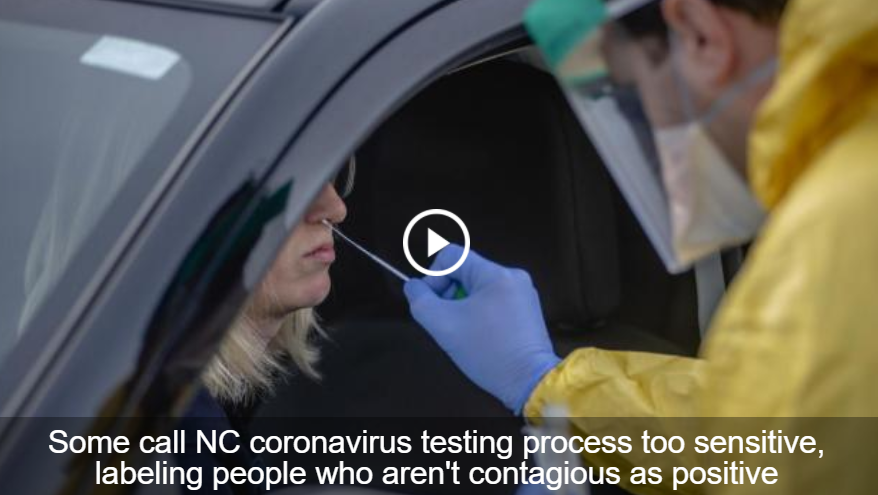
RALEIGH, N.C. — North Carolinians have taken more than 3 million coronavirus tests during the pandemic, with PCR testing accounting for 97 percent of the positive results.
Polymerase chain reaction, or PCR, tests involve rapidly making millions to billions of copies of a specific DNA sample through a process called cycling, amplifying it enough to study in detail. While the test is widely regarded as accurate when it comes to positive or negative for coronavirus, some in the scientific world say it provides an incomplete picture.
Dr. Carl Heneghan, director of the University of Oxford's Centre for Evidence-Based Medicine, told The Spectator magazine in London, that the black-and-white nature of the test is leading to an inflated number of cases.
"We have found RNA evidence in shedding for 78 days," Heneghan said. "When you’re picking up asymptomatic people, you have no idea if they have an active infection, or did they have it two months ago?"
For its coronavirus test, North Carolina's state public health lab cycles a DNA sample up to 37 times before deciding whether it’s positive or negative. LabCorp, the main private tester in the state, has a cycle threshold that’s even higher, at 38.
"The more times you do that, the less virus you start out with," Heneghan said.
WRAL Investigates went through the specs of dozens of PCR tests that asked for emergency approval from the U.S. Food and Drug Administration. The cycle thresholds range from as low as 35 to as high as 40, depending on the maker.
"The higher that threshold goes, the dimmer the signal is – or translated to virus, the lower amount of virus is present," said Thomas Denny, chief operating officer of Duke University's Human Vaccine Institute, who heads up the school's coronavirus testing program.
"If you think of a needle in a haystack, it’s very hard to find a needle in a haystack," Denny said in explaining the cycling threshold concept. "But if you can make 1,000 needles in that haystack or 1,500 needles in that haystack, it’s easier to pick it out."
The higher thresholds raise questions when people are labeled as positive, he said, noting the test could detect inactive virus.
But Scott Shone, director of the state's public health lab, said the debate misses the point of the testing.
"These tests weren’t designed specifically to identify how much virus is there, just whether it’s there or not," Shone said. "Trying to add additional layers of analysis onto a test that wasn’t designed for that purpose can be dangerous."
When labs report results to North Carolina, it’s only in the form of positive or negative. Denny said he thinks health care providers could use the cycle threshold results as one diagnostic tool, along with a patient’s condition and known contacts. Someone with a high cycle threshold positive result may not be an active case and may not need to quarantine, he said.
"I think knowing that is useful information, especially in the early days of the disease where we are now," he said, adding that it’s better to have testing that’s too sensitive because a false positive is better than a false negative, which could lead to more spread.
Some researchers have tried to grow coronavirus from samples with cycle thresholds higher than 34. But they were unsuccessful, meaning the virus wasn’t active – yet the people who took the test were labeled as positive.
Dr. Michael Mina, an assistant professor of epidemiology at Harvard University's T.H. Chan School of Public Health, has recommended cutting off the cycle threshold closer to 30 to identify only those people who have enough virus to spread. Lowering the cycle threshold would reduce cases by 80 to 90 percent, he said.
Heneghan said thresholds in the high 30s paint a false picture, causing unnecessary quarantines and negative economic impacts,
"You can point a threshold level which says you are infectious, which is about a million copies per [milliliter} in a sample, which is a cycle threshold of about 25," he said.
That 25 threshold is exponentially lower than what most labs use to test for the coronavirus. The FDA applications for LabCorp’s test, as well as the ThermoFisher test used by the state lab, clearly say that, after a positive result "other diagnostic information is needed to determine patient infectious status."
In most cases, however, lab results are reported to the patient and local health authorities without any follow-up examination.